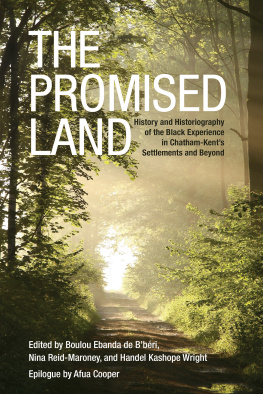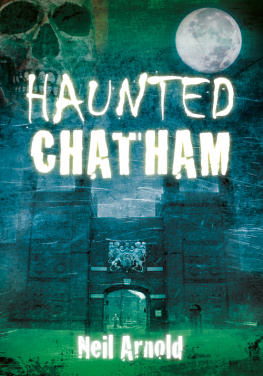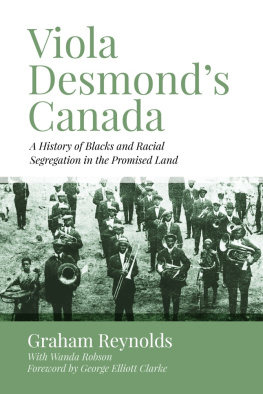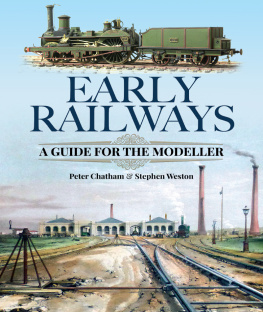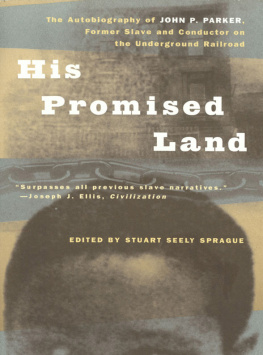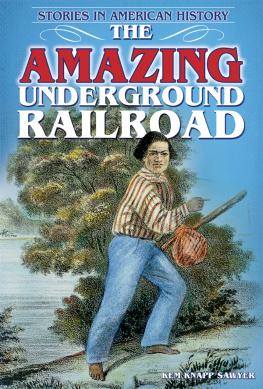THE PROMISED LAND
History and Historiography of the Black Experience in Chatham-Kents Settlements and Beyond
Eschewing the often romanticized Underground Railroad narrative that portrays southern Ontario as the welcoming destination of Blacks fleeing from slavery, The Promised Land reveals the Chatham-Kent area as a crucial settlement site for an early Black presence in Canada. The contributors present the everyday lives and professional activities of individuals and families in these communities and highlight early cross-border activism to end slavery in the United States and to promote civil rights in the United States and Canada. Essays also reflect on the frequent intermingling of local Black, White, and First Nations people. Using a cultural studies framework for their collective investigations, the authors trace physical and intellectual trajectories of Blackness that have radiated from southern Ontario to other parts of Canada, the United States, the Caribbean, and Africa. The result is a collection that represents the presence and diffusion of Blackness and inventively challenges the grand narrative of history.
(African and Diasporic Cultural Studies)
BOULOU EBANDA DE BBRI is a professor of Communication and Cultural Studies and the founding director of the Audiovisual Media Lab for the study of Cultures and Societies at the University of Ottawa.
NINA REID-MARONEY is an associate professor in the Department of History at Huron University College, Western University.
HANDEL KASHOPE WRIGHT is a professor of Education and founding director of the Centre for Culture, Identity and Education at the University of British Columbia.
Contents
BOULOU EBANDA DE BBRI, NINA REID-MARONEY, AND HANDEL KASHOPE WRIGHT
Part I: Introducing the Promised Land Project
BOULOU EBANDA DE BBRI
HANDEL KASHOPE WRIGHT
NINA REID-MARONEY
Part II: From Fragments through Biography to History
MARIE CARTER
CLAUDINE BONNER
NINA REID-MARONEY
Part III: Transgeographical Trajectories and Identity Formation beyond the Underground Railroad
OLIVETTE OTELE
PETER T. DALLEO
MARIE CARTER
AFUA COOPER
University of Toronto Press 2014
Toronto Buffalo London
www.utppublishing.com
Printed in the U.S.A.
ISBN 978-1-4426-4717-6 (cloth)
ISBN 978-1-4426-1533-5 (paper)

Printed on acid-free, 100% post-consumer recycled paper with vegetable-based inks.
African & Diasporic Cultural Studies
Library and Archives Canada Cataloguing in Publication
The promised land: history and historiography of the Black experience in Chatham-Kents settlements and beyond / edited by Boulou Ebanda de Bbri, Nina Reid-Maroney, and Handel Kashope Wright.
(African & diasporic cultural studies)
Includes bibliographical references and index.
ISBN 978-1-4426-4717-6 (bound). ISBN 978-1-4426-1533-5 (pbk.) ISBN 978-1-4426-6746-4 (ePUB)
1. Black Canadians Ontario Chatham-Kent History 19th century. 2. Blacks Ontario Chatham-Kent History 19th century. I. Reid-Maroney, Nina Ruth, 1961, editor of compilation II. Wright, Handel Kashope, 1959, editor of compilation III. Ebanda de Bbri, Boulou, editor of compilation IV. Series: African and diasporic studies
FC3099.C45Z7 2014 971.3'3300496 C2014-900417-6
University of Toronto Press acknowledges the financial assistance to its publishing program of the Canada Council for the Arts and the Ontario Arts Council, an agency of the Government of Ontario.

University of Toronto Press acknowledges the financial support of the Government of Canada through the Canada Book Fund for its publishing activities.
The University of Toronto Press acknowledges the financial support of the University of Ottawas Faculty of Arts as well as the financial support of the Social Sciences and Humanities Research Council through its Community-University Research Alliances program.
The Promised Land
History and Historiography of the Black Experience in Chatham-Kents Settlements and Beyond
EDITED BY
BOULOU EBANDA DE BBRI,
NINA REID-MARONEY,
AND HANDEL KASHOPE WRIGHT
EPILOGUE BY AFUA COOPER
UNIVERSITY OF TORONTO PRESS
Toronto Buffalo London
For Gwendolyn Robinson
Introduction
BOULOU EBANDA DE BBRI, NINA REID-MARONEY, AND HANDEL KASHOPE WRIGHT
This book was born of the remarkable collaboration that was the Promised Land Project (PLP). Based on the early work of the research team, the book reflects the projects mandate, which was to create a Community University Research Alliance that would cut across disciplinary boundaries and build bridges among academics, community scholars, and students at all levels. The study of nineteenth-century African Canadian history in Chatham-Kent (formerly Kent County) was the projects point of origin, and while researchers were immediately drawn to the rich materials of the past, those materials opened pathways to wider historical discussions of race, identity, and culture. The projects grounding in particular questions about nineteenth-century African Canadian communities was balanced by its wider efforts to lift the histories and narratives of nineteenth-century Black settlement out of the narrow places where they had been pigeonholed and to open them to a national and ultimately global context.
This books ground-breaking research develops themes that were central to the PLP. Like the project as a whole, it is about connections, place, and movement across historical periods and national boundaries, oceans and regions, and academic disciplines. It explores the interplay between past and present, history and memory, local and global concerns. It offers fresh insights by exercising the historians habit of suddenly shifting perspective to reveal new patterns and, just as importantly, to reveal those places and times where the patterns blur and break.
Students of recent historiography will recognize here the influence of the spatial turn in historical studies. The research uses the land itself the geography of the Promised Land to map settlement, culture, and identities. Readers will also recognize that the language of a Promised Land, even one in which the promise remains largely unrealized, is both metaphor and reality. This understanding reaches far back in the history of slavery and freedom. It was articulated in striking terms by Daniel Payne, distinguished Bishop in the African Methodist Episcopal Church (AME). In the early spring of 1835, Payne was a free man living in the slaveholding stronghold of Charleston, South Carolina, and making his way as the teacher in charge of a small school for Black children. Having purchased a precious book an illustrated atlas for the price of one shilling from a woman in the Charleston market, he quickly added geography and map-making to the lessons he taught his young pupils. When the South Carolina legislature passed strict laws forbidding the education of Black students, Payne was distraught. In his autobiography, he tells us:

